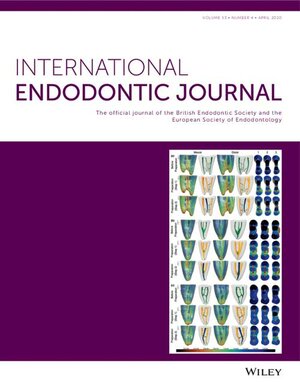Effectiveness of calcium hydroxide compared to hydraulic calcium silicate cements for direct pulp capping in managing deep caries in vital permanent teeth: A systematic review and meta-analysis
Abstract
Background
Direct pulp capping (DPC) is the least minimal approach for maintaining pulp vitality after pulp exposure. Besides calcium hydroxide (CaOH), hydraulic calcium silicate cements (HCSC) have increasingly been used for DPC.
Objectives
During the S3 level guideline development for material choice in DPC, we conducted a systematic review and meta-analysis of existing literature comparing CaOH and HCSC for DPC on permanent teeth. We aimed (1) to assess clinical and radiographic outcomes and (2) patient-reported outcomes of DPC.
Method
Three databases from 1 January 1990 to 19 February 2025 (MEDLINE via PubMed, EMBASE and Cochrane Database of Systematic Reviews). Prospective comparative clinical studies comparing CaOH to HCSC for DPC in permanent teeth with healthy or reversibly inflamed pulps were included. Studies on primary teeth or teeth indicative of irreversible pulpitis, teeth with unclear diagnoses or pulp exposure of non-cariogenic origin were excluded. The risk of bias and certainty of evidence were evaluated using the GRADE approach. Using the effect sizes and standard errors for every study, pairwise meta-analysis was performed comparing CaOH and different subgroups of HCSC. Success was defined as the absence of any clinical symptoms (e.g. pain, swelling) and any radiographical signs of an apical lesion. Patient-reported outcomes were additionally sought after.
Results
Five randomized-controlled trials including 552 teeth with an overall moderate certainty of evidence were included. HCSC showed a significantly higher probability of success compared to CaOH (Odds Ratio (OR): 2.68, 95% confidence interval [1.7, 4.22], I2 = 0%). The differences between various HCSC materials were minimal. Meta-regression indicated that neither follow-up nor risk of bias significantly influenced treatment outcomes, and the funnel plot did not reveal evidence of publication bias.
Conclusion
HCSC showed significantly higher probability for clinical and radiographic success than CaOH. This finding comes with moderate certainty. The impact of material choice on postoperative pain remains unclear. Future clinical studies should include patient-reported outcomes.


 求助内容:
求助内容: 应助结果提醒方式:
应助结果提醒方式:


